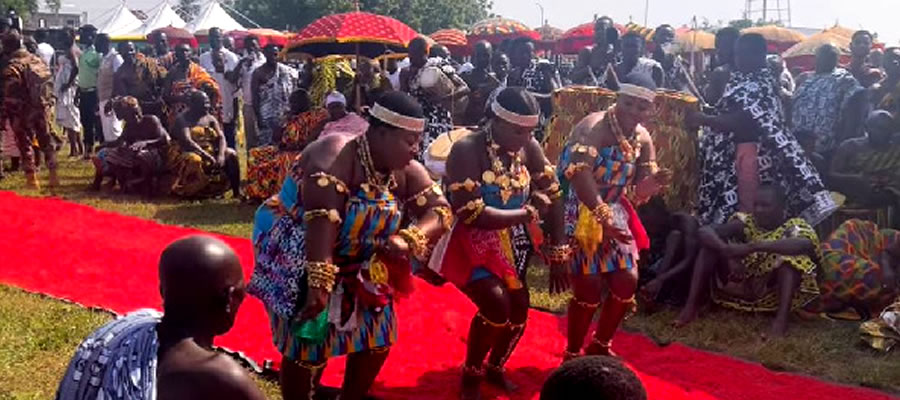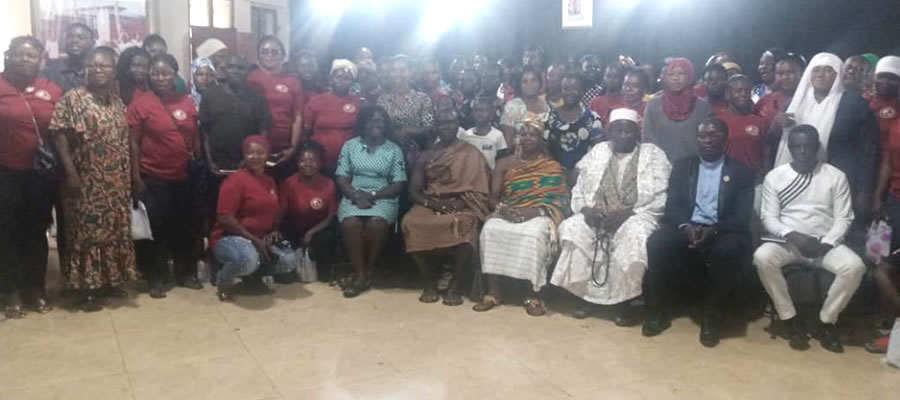

Political Administration
The Municipality has two constituencies namely; Mampong and Nsuta-Kwamang-Beposo. The Municipal has one (1) Urban Council, Five Town Councils, eight (8) Area Councils, one hundred and fifty six (156) Unit Committees and forty eight (48) Electoral Areas.
Ghana’s decentralization process is structurally enhanced with these sub-district structures. However, the impact on Local/Community Level Administration is not much felt since most of the sub-district structures do not function as expected. For example, only Mampong and Nsuta substructures function and even then their performances are abysmal. The remaining twelve (12) are not functional because of lack of office accommodation, logistics, personnel and financial support.
Plans are underway to provide office accommodation, engage the services of personnel and provision of logistics in the years ahead. For a start, office accommodation has been provided for Amoamang Area Council
The Municipal Assembly Machinery
Mampong Municipal Assembly consists of 69 Assembly Members. Two third of the number i.e. are elected from the 48 electoral areas while the remaining 19 are appointed. Nine of the members are female constituting 13.4 percent. The Municipal Chief Executive and the two Members of Parliament (Mampong and Nsuta, Kwamang-Beposo Constituencies) are Ex-Officio members.
The Municipal Chief Executive doubles as both the Political and Administrative head of the Assembly. The Municipal Assembly is presided over by a Presiding Member who is elected from among the members of the Assembly by at least a two-third majority. The Municipal Assembly is responsible for the overall development of the Municipality. It is charged with programme formulation, budget preparation and the promotion of fairly distributed development programmes across the Municipality.
The Executive and administrative function of the Assembly are performed by an Executive Committee, membership of which are elected from among the Assembly members but not exceeding one- third of the numerical strength of the Assembly.
The Executive committee is chaired by the Municipal Chief Executive, excludes the Presiding Member, and operates through sub-committees such as.
1. Development planning sub -committee
2. Social services sub-committee
3. Works sub- committee
4. Justice and Security sub-committee
5. Finance and Administration sub committee
6. Environmental sub –committee and
7. Such other sub-committees as the Municipal Assembly may deem fit.
The Sub-committees deliberate on specific issues and submit their recommendations to the Executive Committee, which in turn present them to the Municipal Assembly for ratification. A Municipal Planning Co-ordinating Unit (DPCU) is established for the Municipal Assembly to provide secretarial and advisory services to the Executive Committee and its Planning and programming functions. The Annual Plan produced by the Unit serves as input into the yearly budget preparation. This Unit however is woefully under resourced. Planning functions in the Municipality are seriously impaired because of lack of resources.
The Municipal Assembly has one (1) Urban Council, four (4) Town Councils and eight (8) Area Councils as well as 173 Unit Committees within the Municipality. These constitute Sub- District administrative units and are instrumental in The Assembly is headed by a Civil Servant – the Municipal Coordinating Director – under the overall supervision of the Municipal Chief Executive. The Municipal administrative machinery with modifications according to the Local Government Law 1993
Non- Governmental Organizations have been playing a very important role in the development of the Municipality, especially within the Afram plains. One organization whose role has helped in no small way in providing better living environment for people is the World Vision International (WVI) and in recent times the European Union (EU). The other organizations include the SMO, and the Luke Society.
The Municipal Assembly Structure
One of the significant changes made in the new Local Government Act 1993 (Act 462) is the abolition of the twenty two decentralized departments established under the PNDC Law 207 and their replacement by eleven major ones. These departments are to be created as departments of the Municipal Assembly, owing full allegiance to the Assembly. The old departments therefore cease to exist in the district and their staff, transferred to a Local Government service at a precise date to be determined by legislative instrument.
The budget of Mampong Municipal Assembly shall consequently consist of the aggregate revenue and expenditure of all departments and organizations under the Municipal Assembly. The new departments to be established are:
1. Central Administration Department
2. Finance Department
3. Education, Youth and Sports Department
4. District Health Department
5. Agriculture Department
6. Physical Planning Department
7. Social Welfare and Community Development Department
8. Natural Resources Conservation Department, Forestry and Wildlife Division
9. Works Department
10. Industry and Trade Department
11. Disaster Prevention Department
All the above decentralized departments are established in the district and are functioning accordingly.
Institutional Structure
Under the institutional structure of the Mampong Municipal Assembly, the activities of the departments are coordinated by the Municipal Co-ordinating Director who reports to the Municipal Chief Executive, The Municipal Co-ordinating Director has 4 deputies for Planning, Administration, Budgeting and Finance. The Municipal Chief Executive who is the Chairman of the Executive Committee reports to the General Assembly.
Citizenry Participation in Governance
As beneficiary of the Government Accountability Improves Trust (GAIT II), a USAID sponsored programme, the District cherishes the promotion of accountability and citizen participation/involvement in Local governance. The District has a well established Civic Union made up of about 200 Civil Society Organizations out of which eighty-six (86) are registered. There are six (6) Sub -Civic Unions. The Civil Society Organizations have taken up the challenge of promoting citizens’ participation and involvement in Local governance and advocacy.
Under this programming series of town meetings, public fora, public participatory budget hearing, public participation in fee/rate fixing among others are being promoted. The Municipal Security Committee ( MUSEC) is responsible for ensuring security in the Municipal. The Municipal Chief Executive is the Chairman of the MUSEC.
Date Created : 11/27/2017 7:56:27 AM












 facebook
facebook
 twitter
twitter
 Youtube
Youtube
 +233 593 831 280
+233 593 831 280 0800 430 430
0800 430 430 GPS: GE-231-4383
GPS: GE-231-4383 info@ghanadistricts.com
info@ghanadistricts.com Box GP1044, Accra, Ghana
Box GP1044, Accra, Ghana